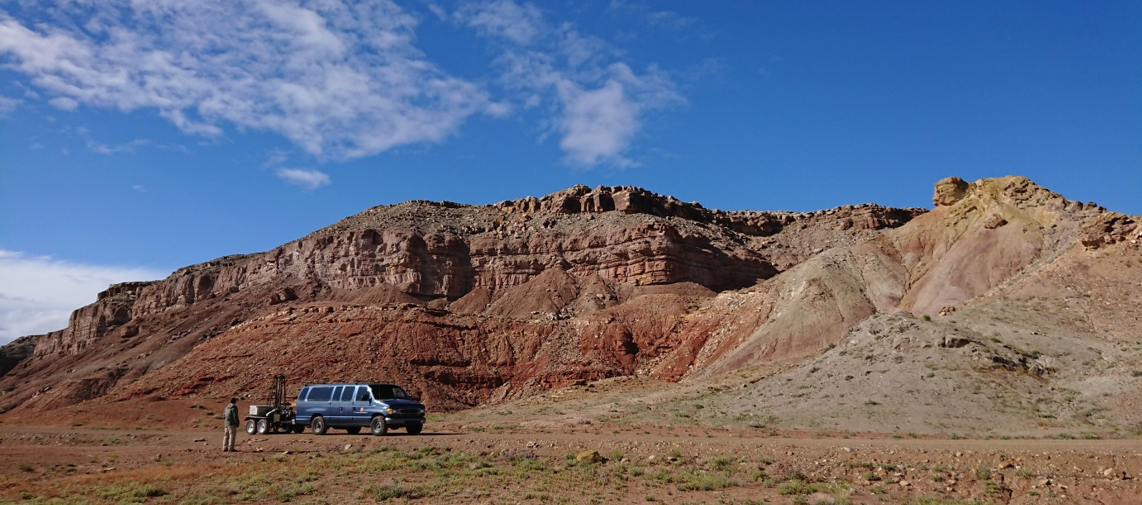The impacts of Carbon Capture and Storage (CCS) on mitigating climate change appear more and more crucial every day (Bui et al. 2018, doi.org/10.1039/C7EE02342A). It is therefore important to complement the subsurface analysis of stratigraphic intervals selected for CCS project through the study of analogue sedimentary systems.
This master project will offer you the chance to join a multi-disciplinary team of international researchers working on one of these CO2 reservoir analogues, which crops out in Utah, USA. You will collaborate with scientists from Utah State University, Western Colorado University, Boise State University, and Colorado School of Mines.
The Middle to Upper Jurassic faulted and fractured stratigraphic interval in question has been accumulating CO2 naturally for at least the last 100’000 years. It is composed of a complex vertical and lateral arrangement of continental and shallow-marine seal and reservoir units. Your work will help to improve the understanding of sediment dispersion and characterisation across this shallow-marine to continental transition.
The results of your thesis will be implemented in an ultra-high-resolution, geological model of the area, in order to simulate the migration of CO2 through these faulted sedimentary units at a strata-scale.
On top of the applied side of your thesis, you will be given the chance to collaborate with scientists from Keele University in the United Kingdom. As your work will also aim at integrating palaeoclimatic and chronostratigraphic reconstructions, as well as recognising Milankovitch-type cyclicity, it will further increase the understanding of such shallow-marine to continental transition at a basin scale.
Aim of the thesis:
Increase the understanding of a shallow-marine to continental transition in an arid environment, helping construct an ultra-high-resolution, geological model of the targeted stratigraphic interval with a CCS context.
Objectives:
- Characterise the sedimentology and the reservoir properties of the targeted sedimentary interval at a bed-scale,
- Detailed interpretation of the depositional history of these units,
- Discuss the auto cyclic VS allocyclic forcing onto the development of this transitional system,
- Publish the results of the thesis in an international, peer-reviewed, scientific journal.
Research method and dataset:
Your thesis will involve two to three weeks of fieldwork in Utah, in the vicinity of Little Grand Wash Fault, south of Green River, USA (Fig. 1). You will measure several sedimentary sections in the area, identifying each of the reservoir and seal beds, and collecting permeability data with a MiniPerm tool, and quantifying porosity of key beds through the study of thin sections. The use of drones and 3D virtual outcrops will also help in understanding the architecture of the targeted interval. You will also be encouraged to implement subsurface data into your work, which will be provided by project partners.
You will be further invited to collaborate and share your data and your findings with fellow scientists and students from Keele University, helping to better understand the evolution and the interactions of continental and shallow marine systems within an arid environment.
The student will:
- Get a unique experience in the field, collecting data surrounded by an amazing and pristine nature
- Learn how to conduct independent research, and develop his/her academic writing and presentation skills
Background for the project:
This MSc work is part of the COTEC research project at UiO focusing on CO2 containment and monitoring techniques. The student will get a chance to work in a cross-disciplinary team taking part in a collective effort on understanding how CO2 migrates through sedimentary strata, fractures and faults. Field campaigns for data collection in Utah are planned within the project and provide possibilities for the collection of additional data for this study.
Contact:
Valentin Zuchuat or Ivar Midtkandal
